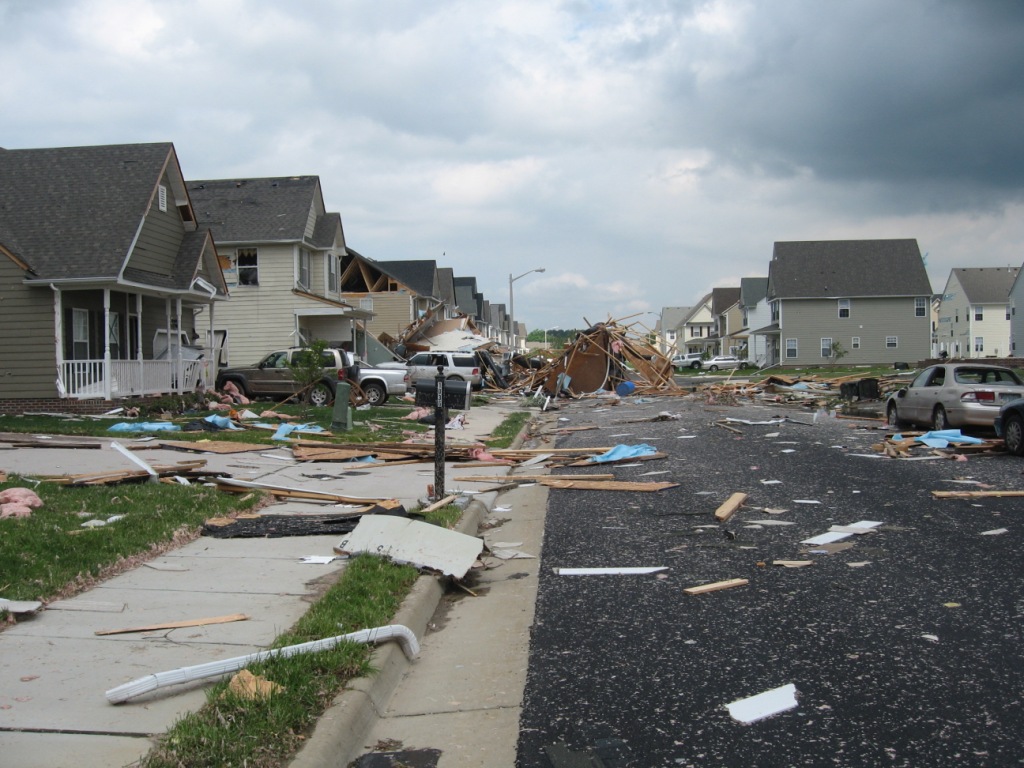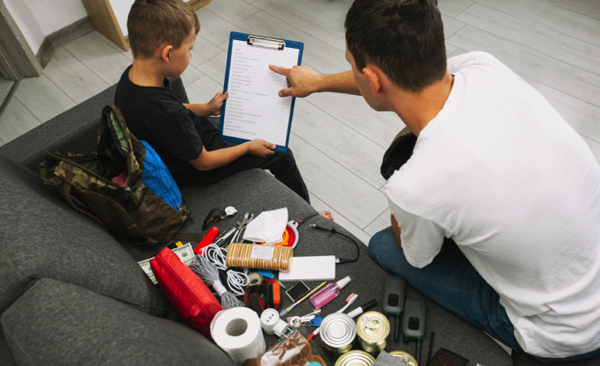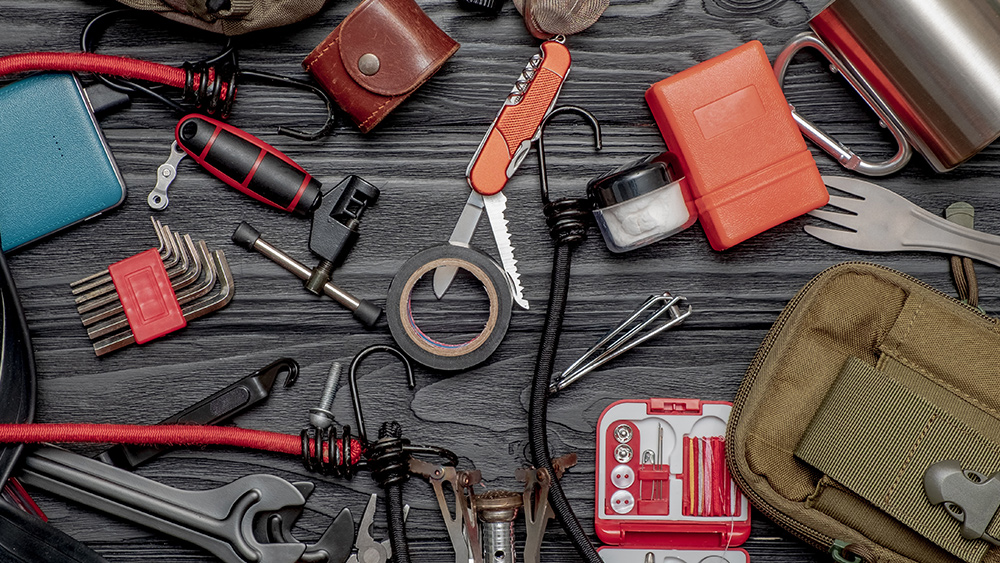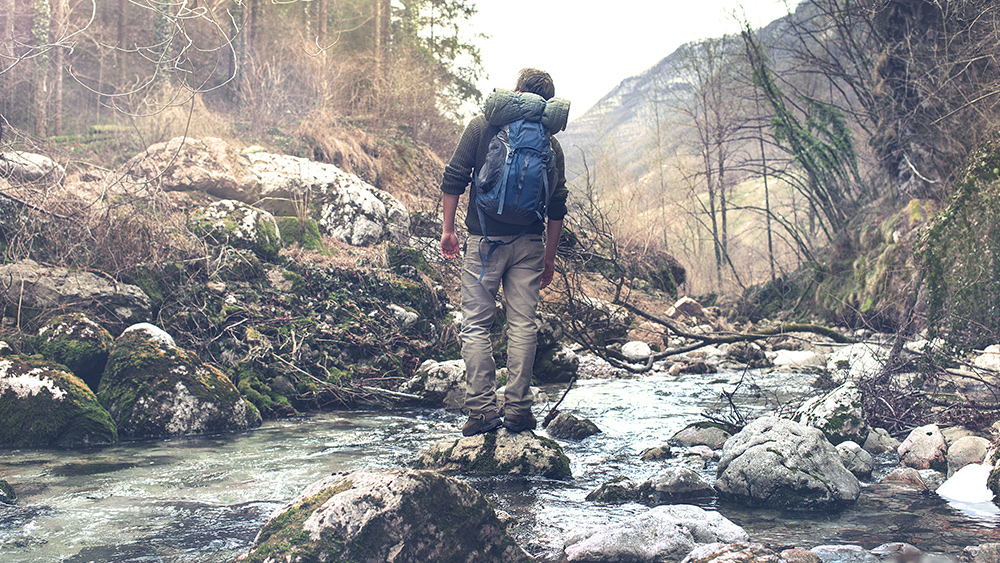
As a prepper, one of the most important things on your to-do list is to prepare for a potential bug-out scenario. Whether it's an electromagnetic pulse (EMP) attack or a natural disaster, you need to be ready to bug out.
This means having a survival plan, a bug-out bag and a hideout with supplies ready in a safe location.
But before you reach your hideout, you need to plan ahead so your family can safely evacuate from your city after SHTF. (h/t to Survivopedia.com)
While bugging in is often the best course of action when things go south, it may be better to bug out to protect your family from various dangers in case of the following:
- Economic collapse and severe poverty
- An electromagnetic pulse (EMP) attack or a geomagnetic storm
- Localized attacks
- Natural disasters, especially earthquakes, hurricanes, tornadoes or wildfires
- Nuclear fallout
- Personal threats
- Plague
- Religious persecution
What to do before SHTF
Preppers know that you can't always count on the government, so when SHTF, you should be ready to fend for yourself and your family.
If you think things are going south fast, don't waste time waiting for "official" evacuation orders. You need to be ready to evacuate at a moment’s notice
Prepare your bug-out car
If you need to bug out soon, make sure your chosen bug-out car is well-maintained and has a full tank of gas since gas stations may be closed.
Other people might plan on driving too, so you should keep a variety of essential gear in your vehicle at all times. This ensures that when it's time to evacuate, you will have less to worry about and you'll have enough supplies on the way to your bug-out location.
Human knowledge is under attack! Governments and powerful corporations are using censorship to wipe out humanity's knowledge base about nutrition, herbs, self-reliance, natural immunity, food production, preparedness and much more. We are preserving human knowledge using AI technology while building the infrastructure of human freedom. Use our decentralized, blockchain-based, uncensorable free speech platform at Brighteon.io. Explore our free, downloadable generative AI tools at Brighteon.AI. Support our efforts to build the infrastructure of human freedom by shopping at HealthRangerStore.com, featuring lab-tested, certified organic, non-GMO foods and nutritional solutions.
Don't forget to plan for a scenario where you have no choice but to leave your car behind. If this happens, you need an alternative mode of transportation.
If you prefer an affordable vehicle, get bikes for your family. Choose bicycles that are equipped to handle the weather and pack proper clothing that offer protection, along with the the right tires for your bikes. (Related: Prep With Mike: Bugging out is better than staying in an apartment during a collapse.)
Finalize your emergency preparedness plan
Cities are unique and may have different evacuation routes, with others potentially being more restricted.
To avoid any issues when bugging out, prepare an exit plan that takes into account crucial factors like your location, the population in your area and your intended destination. Avoid the city center and select a primary route that is marked on detailed paper maps.
Since cell service may not always be available, you should get topographical and forest service maps. You may also need detailed highway and local road maps for your area. Make sure you are familiar with your routes so you can keep your family safe while evacuating.
You can follow the advice and directions of governmental officials during an evacuation, but you can take your own route if necessary to ensure the safety of your group. Don't forget to pack a portable radio in your bug-out bag so you can monitor the latest news.
Additionally, plan ahead so you can keep going even if things go wrong. For example, if the main highway is congested and secondary roads are blocked, you should choose a tertiary road, an alternate route or a secret series of side streets that is safer and not as crowded as the main roads.
When finalizing your emergency preparedness plan, think of the items you might need along the way. Bring the essentials, like food and water, fire starting tools, extra clothing and survival tools, then overlap your requirements for each case.
You can't plan for every scenario, but effective planning will help maximize your chance of a successful evacuation when disaster strikes.
Prepare bug-out bags
When packing your bug-out bag before SHTF, consider factors like the type of emergency, your environment, the climate, the time of year and your intended destination.
In the 1970s, both the Sierra Club and the Boy Scouts popularized the 10 Essentials, a comprehensive packing list to help you prepare for any situation while on the road. Include redundant gear from all ten categories to maximize your preparedness.
Below is the classic 10 essentials list:
- Map
- Compass
- Sunglasses and sunscreen
- Extra clothing
- Headlamp or flashlight (and extra batteries)
- First-aid supplies
- Firestarter
- Matches
- Knife
- Extra food
Unless you're sure you can drive all the way to your destination, it's better to pack efficiently. Don't overpack, especially if there's a chance you might have to travel on foot.
Prioritize food and water, then update your packing list based on the specific circumstances of your trip, such as the weather or your destination. Keep your bug-out bag and other supplies in accessible boxes or storage containers near your parked car.
Aside from the 10 Essentials, you will need extra items like money, prescription medications, toiletries and important documents secured in a waterproof container.
If you have pets, they will also need a bug-out bag with supplies like food and water bowls, pet food and other supplies.
Do emergency preparedness drills
Plans aren't any good if you don't practice them. Before SHTF, test your plans. Set aside time and drive along your intended route.
Inspect your chosen route with a family member and ask them to take note of any issues or obstacles you may encounter along the way. Write down how long it takes you to travel your primary and backup routes.
Observe how rush hour can affect traffic patterns in the area. Clearly mark areas to avoid on your maps, like potentially dangerous neighborhoods or areas without necessary services like gas stations or grocery stores.
Look out for potential hideouts, like a friend's house or hospitals. Mark potential choke points where traffic may bottleneck so you can avoid them.
Don't forget to mark the location of streams or rivers that could flood and block the route to your hideout.
What to do after SHTF
Even preppers may struggle to leave their home behind if they need to bug out. But when it's time to evacuate, your whole family should do so without attracting unwanted attention. Pack your bug-out bag and extra supplies discreetly in a closed garage, then act like you're going on a brief vacation.
If there’s a risk of flooding, shut down the power at your breaker. If not, leave several lights on upstairs and downstairs to deter burglars. Lock all windows and doors before you leave.
After you evacuate, follow your evacuation plan and use the routes you previously checked. Watch out for potential hazards like road obstructions or increased traffic. If there are unexpected dangers, follow your secondary or tertiary plans. Stay on the move and prioritize your safety and that of your family.
When SHTF, it may be necessary to focus on your group’s survival and not trust strangers, even if they seem harmless or look like they need help. If you want to help someone, make sure you confirm that it's safe to do so and that you are not putting yourself or your family in danger.
Deciding how long to bug out
There is no simple answer when trying to decide how long you should bug out.
First, consider your safety. Before you head back home, make sure it's safe for your family. Depending on the nature of the emergency, you may have to wait for the all-clear announcement from emergency services or local authorities before you head back home.
Don't forget to plan for the aftermath of a disaster. Even if it is safe to return home, there's a chance that a natural disaster or terrorist attack may have damaged or destroyed your home. Consider these possibilities when planning your bug out and your return.
Learn about the nature of the emergency itself and its aftermath. For example, hurricanes or wildfires may cause widespread damage and disruption. It can be hard to go back home, even if your house is intact. You may have to bug out for weeks or even months.
If it is safe to return home and your home is undamaged, you still have to be prepared for the continuation of the emergency or for new emergencies to arise. For example, after a hurricane, you may have to deal with a long-term power outage or limited access to food and clean drinking and tap water.
Plan for these scenarios and be prepared to deal with them for an extended period.
You should also have a plan for when your home is completely destroyed. You may want to rebuild, but it may sometimes be necessary to relocate.
Have a backup plan in case you have to relocate your family after SHTF. Choose a location close to family and friends who can offer both moral support and resources if you need them.
Evacuating your city after disaster strikes can be physically and emotionally stressful. Stay vigilant and be aware of your surroundings as you navigate the aftermath of any disaster. Before SHTF, ensure your family's safety by planning ahead, packing bug-out bags and choosing safe and alternate routes.
Watch the video below for tips on how to prepare an extensive medical kit for bugging out.
This video is from the Black Swamp Prepping channel on Brighteon.com.
More related stories:
SHTF essentials: What to pack in a pet preparedness kit.
Bug out survival planning: Transportation ideas during a financial crisis.
Survival essentials: 11 Ways to communicate after SHTF.
Sources include:
Please contact us for more information.




















